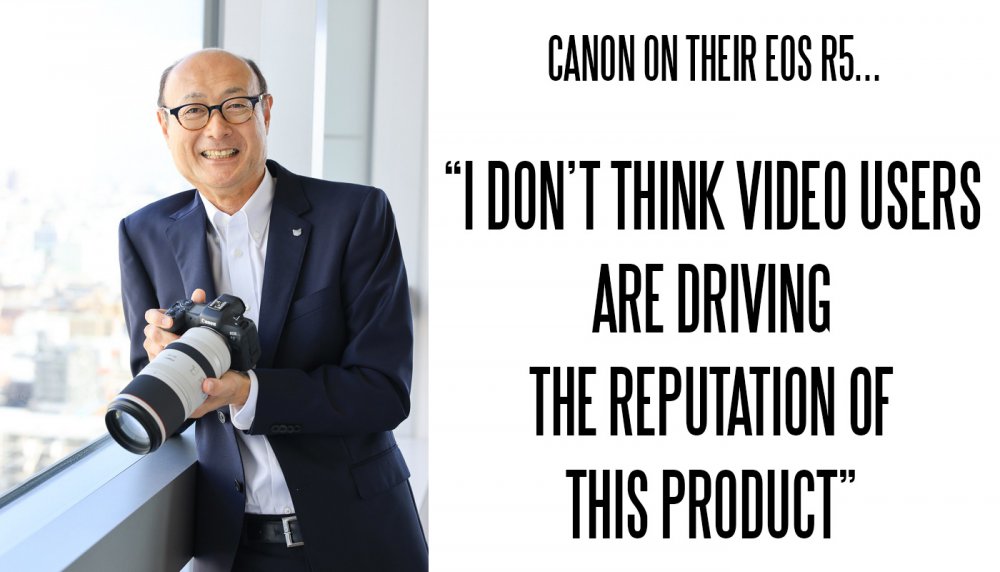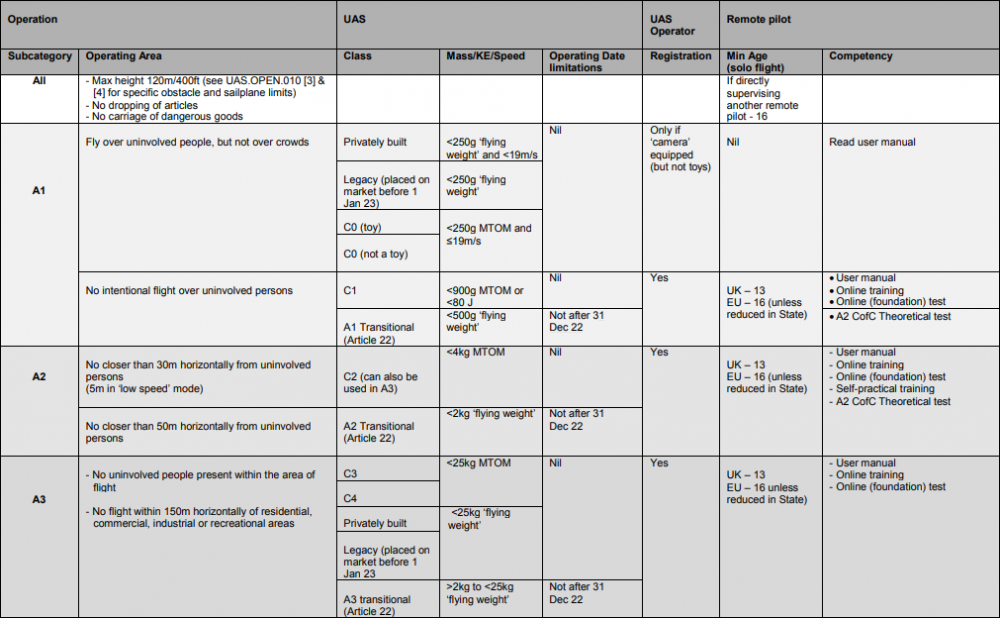Leaderboard
Popular Content
Showing content with the highest reputation on 01/20/2021 in all areas
-

Camera owning plans 2021
Video Hummus and one other reacted to kye for a topic
Compression done after-the-fact will always have the advantage because the whole file can be analysed and processing can be done in slower than real-time, whereas cameras can't see into the future and have to be able to compress in real-time. When you're talking about the types of bitrates that we operate at, ie, >50Mbps for 4K, it's in the diminishing returns part of the quality vs bitrate curve, so large decreases in bitrate don't impact the quality nearly as much.2 points -
I agree. I would add that "constant quality" (variable bitrate) works best for me. Here’s what has surprised me over the past two years with mirrorless video: I shoot 4K 60p in-camera at 200Mbps H265 10bit. When I re-compress this to H265 10bit In Handbrake (at many times slower than real time) at the RF 19 setting with “constant quality”, I get near identical image quality at only 10Mbps to 60Mbps depending on the subject matter. The scenes at higher bit rates (50-60Mbps) are outdoor shots with a lot of complicated textures from trees, grass, etc. But indoors shots with solid color walls and less busy backgrounds can come out as low as 10-20Mbps. I compared test files like this: Open the test movies in Quicktime player windows. In one of them go to the menu “Window / merge all windows”. This puts them all in one window with tabs along the top for each video. Find the same frame In all the movies, and set all at the same magnification. Do an instant back & forth comparison by clicking on the tabs. Comparisons at high magnification shows a tiny bit of softening in the Handbrake image compared to the original, not visible at normal magnification, at a fraction of the of the original camera bitrate. It seems to me that the speed of compression processing affects the IQ as much as the bitrate. In other words, letting Handbrake run a compression slowly at 5 frames a second (resulting in a 20Mbps variable bitrate “constant quality” file) can give the same IQ as the original camera file did in real time at 60 frames per second (at 200Mbps “constant bitrate”.) More time/frame makes sense when you look at what happens in the algorithm settings Handbrake uses for compression as you change the slider under encoder options from fast to slow. For example, h264 10bit, slider at “medium” shows the following settings: x264 Unparse: level=4.0:vbv-bufsize=75000:vbv-maxrate=60000 compared to slider at “very slow”: x264 Unparse: level=4.0:ref=5:bframes=8:b-adapt=2:direct=auto:analyse=all:me=umh:merange=24:subme=10:trellis=2:vbv-bufsize=75000:vbv-maxrate=60000:rc-lookahead=60 Going from 200Mbps to 20 or 30Mbps for comparable IQ was a surprise. This is probably common knowledge for Handbrake users, but I haven’t seen it discussed (or I missed it). Happily this means I can archive an excellent master at a fraction of the original 200Mbps. And fit everything on a flash drive for the TV’s USB slot. To get back on topic, I usually go at least five years between cameras, which means I might still have three more to go with the X-T3. I have oversampled 4K60 DCI 10bit, Fuji fixed the auto ISO stepping, I got the lenses and accessories I need so I’m fixed indefinitely. Now if Sony 4K projectors would come down in price…2 points
-
How's in your jurisdiction? Any personal stories of EOSHD users interesting to share with this community? Interesting episode in Brazil (sorry, only available in native Portuguese) where the bird can't be 30 meters (horizontally) nearby people for justifiable reasons : D http://g1.globo.com/bahia/bahia-meio-dia/videos/t/edicoes/v/homem-e-preso-por-importunacao-sexual-apos-filmar-mulheres-com-o-auxilio-de-um-drone/7663339/1 point
-

Canon on EOS R5 video users
Emanuel reacted to Andrew Reid for a topic
“I don’t think video-focused users are driving the reputation of this new product” Haha. I had a good smile at that comment, but then I realised the missing 4 grand hole in my bank account is still there. Canon exec. Interview: https://www.eoshd.com/news/canons-tsuyoshi-tokura-on-eos-r5-controversy-i-dont-think-video-focused-users-are-driving-the-reputation-of-this-new-product/1 point -
These rules are a game changer now.1 point
-
Some other interesting stuff to have in mind too from new current regulation -- there's a difference between 'uninvolved' and involved people, i.e. some significant definition for filmmakers... ; ) Who is an ‘uninvolved person’? ‘An uninvolved person is a person who is not participating in the UAS operation or who is not aware of the instructions and safety precautions given by the UAS (drone) operator’. A person is considered involved if he/she decides to be a part of the operation, understands the risk and is able to check the position of the drone while it is flying. Therefore, in order to be considered ‘involved’ in the operation, a person needs to: give consent to be a part of the operation (e.g. consent to be overflown by the drone); the consent needs to be explicit; receive from the drone operator/remote pilot instructions and safety precautions to be applied in case of an emergency situation; and not be busy with any other activities that would make the person unable to check the position of the drone and, in case of an incident, take action to avoid being hit. Writing on a ticket that a drone will be used during an event is not considered sufficient, since the drone operator needs to receive individual explicit consent and make sure people understand the risk and the procedures to be taken in case of an emergency. During the operation, it is expected that involved persons will follow the trajectory of the drone and be ready to take action to protect themselves in case the drone behaves unexpectedly. If, during the UAS operation, people are busy working or watching something that is not compatible with monitoring the trajectory of the drone, than they cannot be considered to be involved. Examples of uninvolved people: spectators gathered for sport activities, concerts or other mass events; people in a beach or in a park, or walking on the streets. An uninvolved person is not only a person who is directly exposed to a drone, but could also be a person who is in a bus, car, etc., and who is indirectly exposed. For example, if a drone is flying over a car, its driver should be considered to be an ‘uninvolved person’. The reason is that a drone flying close to a car (even if it does not impact it) could possibly distract its driver and therefore cause a car accident. Regulatory reference: GM1 Article 2(18) Definitions, ED Decision 2019/021/R.1 point
-
New regulation opens three ways: 1) No required authorisation; 2) No difference between non-commercial and commercial usage; 3) the vast European territory to include as for instance UK or Norway beyond EU under the same umbrella. Besides, the chance for "toy" certification under the Directive 2009/48/EC. Here's a more detailed useful chart then: source1 point
-
More actual information here also: https://www.heliguy.com/blog/2020/11/24/dji-drones-retrospective-ce-class-marking/1 point
-
1 point
-
New European regulation from 2021 on: https://www.easa.europa.eu/domains/civil-drones-rpas More info here: https://interestingengineering.com/drone-regulations-go-into-effect-in-the-european-union https://dronerules.eu/en/professional/eu_regulations_updates https://waypoint.sensefly.com/new-eu-drone-regulations-explained-2021/1 point
-
I think the Pocket's bodies would make more sense with a bigger internal battery and a tilt screen. I like the ursa bodies for the internal ND's and they are bigger enough where you can shoot handheld stably even on longer lenses (50mm). The Pocket 6k sensor in an URSA body would make a lot of sense to me. It'll be interesting to see what they do with the 12k sensor tech on lower end stuff if anything. Maybe an URSA ultra mini 8k 😅1 point
-
The first moment of serenity
Mark Romero 2 reacted to Sethman for a topic
This is my first post and thread here but lurking from long time. After months of this pandemic issue, today I had the opportunity to start again filming. A small thing, a short story for a local press but it's anyway something that gave me serenity. A moment where there's only you and the story to film. A feeling almost forgotten, devoured by this uncertain moment, by fears. How do you feel now when you can press the REC button for a paid job?1 point -
RED KOMODO 6K | First Footage - WOW
JordanWright reacted to TomTheDP for a topic
Yeah I mean if you are pushing those shadows I think it becomes more apparent, depending on your eye and the amount you push color around. But yeah 12 bit BRAW is incredible to being with. Would be sweet if BM used the Sony A7S3 sensor in a camera. You'd get that great dual gain ISO as well as low rolling shutter. No 6k though. The Zcam e2g is coming soon but at 6k you might as well get the komodo and get the redraw.1 point -
That isn't sufficient by itself, you need an Ultrasync BLUE as well within range of the F2-BT for them to sync to as well. At least they acknowledged there is an issue, and promised to replace all that are faulty. That's a pretty good response in my books.1 point
-
Development Update - AFX Focus Module For PBC
majoraxis reacted to Caleb Genheimer for a topic
“Add a gimbal with subject tracking and you can have AI track your subject around the scene, then distribute the autofocus distance to the second camera, which can frame your subject/scene however you like, while your subject stays perfectly in focus.” Ok yeah, I’d take a V2 where the sensor is built into a little DJI Osmo kind of micro-gimbal camera that has object tracking to keep the sensor pointed at the subject... that would be straight up insane.1 point -
I picked one up. I'll be using the Siii and BMMCC together. My first big job is in a few weeks in Belize. Time to really test the Sony in the real world. This year I'll be investing in better audio equipment and lighting.1 point
-
There's two ways to look at bitrate. The first is constant bitrate per pixel, which is how Prores works, for example, so that 4X the pixels should be 4X the bitrate in order to maintain the same quality of each pixel. The second is constant bitrate for the overall image. When they released 4K TVs they weren't twice as wide and twice as tall as 1080p TVs. On top of this, my experiments have revealed that a lower resolution looks worse than a higher resolution at an identical bitrate, so there's an argument to be made that keeping the same bitrate is actually not required. Another factor is that image quality goes up with improvements in codec, so h264 isn't as good as h265 (by a factor of about 2), and h266 is about 2 times as efficient as h265. Yet another factor is that displays are getting larger over time, and video quality expectations are also increasing over time. I take all of this and go somewhere in the middle, where I expect a higher bitrate for a higher resolution, but I don't expect to maintain the same bitrate per pixel. I also try to be pragmatic and don't get fussed as long as the bitrate is 'enough'. Obviously that differs between applications and situations, so that's up to everyone to determine for themselves.1 point
-
Aperture 600d Pro light vs Sachtler Flowtech Tripod w/FSB-4 head
Juank reacted to barefoot_dp for a topic
I think you made a good choice - a solid set of sticks will last for decades and might never be redundant. LED lights, however, are changing so fast that there might be something better available for half the price or even less within a few months. I'm seeing lots of listing of people selling 300D's and 120D's at the moment, trying to recover some value before all the latest LED releases become available and the used prices plummet. It's hard to justify putting several thousand dollars in to a single light right now.1 point -

Anyone test Canon R5 vs Canon 1DC?
Juank reacted to Andrew Reid for a topic
I would do, but I left my 1D C in Berlin. Maybe some other time. I am pretty sure the colour science is very similar on both.1 point





